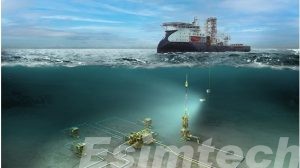What are the Advanced Oil Well Workover Techniques for Mature Fields
Mature oil fields represent a unique challenge to producers, from reservoir pressure depletion to older equipment and increased operating risk. To maintain production and extend the life of such wells,…
Why Onshore and Offshore Drillers Rely on Well Control Simulators for Safety
The drilling industry is filled with challenges and complexities. Each activity – be it onshore in barren deserts or off on remote deepwater basins – is fraught with unanticipated changes…
The Role of Downhole Sensors in Measurement While Drilling (MWD)
Today’s oil and gas drilling involves real-time decision-making while emphasizing precision and productivity to minimize expenses and risk. Among these technologies, Measurement While Drilling (MWD) has become one of the primary…
Navigation Simulators: 5 Key Points You Need to Know
The advent of navigation simulators has changed the face of training, research, and operational planning in the maritime field. These devices aim at reproducing real-world maritime scenarios and allowing vessel operators,…
Top Mistakes in Coiled Tubing Operations — How Simulators Help Prevent Them
In the pressure environment of oil and gas, coiled tubing operations are critical for maintenance, drilling, and well intervention. However efficient they are, mistakes that occur in these operations can lead to…
How Simulation Helps Minimize Environmental Impact in Offshore Operations
Offshore operations are crucial to global energy production, but are not safe for the environment. Offshore drilling operations, in particular, have complex processes that, if performed incorrectly, can lead to…
Environmental Regulations in Oil Transportation
The oil transportation, including pipelines, tanksers, in-line shipping,etc, is crucial in the global energy supply chain. However, the potential environmental hazards such as oil spills, greenhouse gas emissions, and marine pollution, have necessitated the implementation of strict environmental…
Cost Optimization in Oil Drilling
Oil drilling requires a significant investment in exploration, workers, operations, and labor. With the fluctuation of oil prices, volatile global markets, and the growing sustainability requirements, cost optimization has become essential for oil and…
Top Drive Systems in Modern Oilfields: Efficiency, Safety and Technology
gas industry, transforming the process of drilling via increased efficiency, safety, and technological performance. However, the top potential of a top drive drilling rig can only be achieved by employing…
How to Use Simulators to Optimize Oil Recovery Plan Design
Optimizing oil recovery in the modern oil and gas industry is as much a matter of technology and engineering models as it is a matter of human beings operating and…
What is Effective Pipeline Integrity Management
Pipelines are essential in the transportation of water, oil, gas and other vital resources over vast distances. With their importance comes the responsibility of ensuring safety, environmental protection, and uninterrupted operations. Pipeline integrity management is…
Real-time Data Analytics in Well Intervention
In today’s oil and gas industry, well intervention operations are becoming increasingly complex. Real-time data analytics has become a revolutionary approach, allowing operators to make faster, more informed decisions during well intervention. Through the integration…












